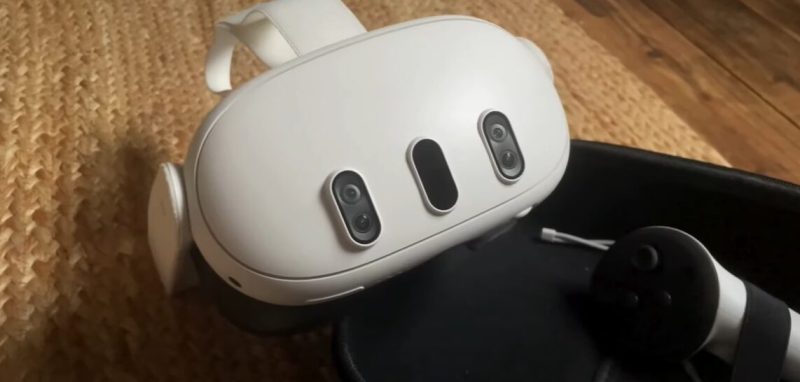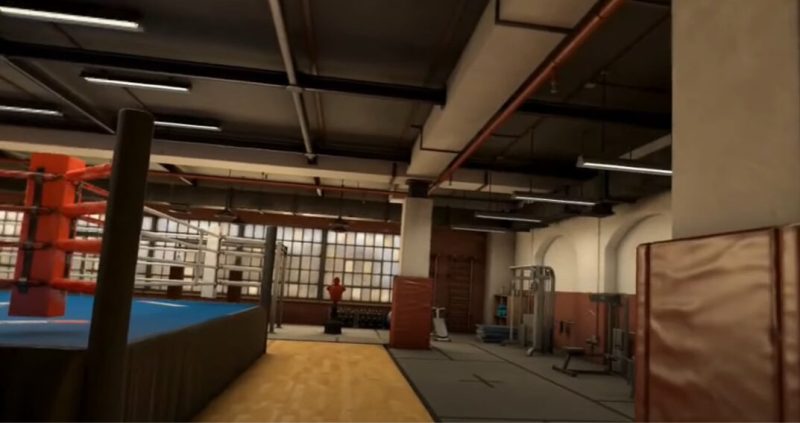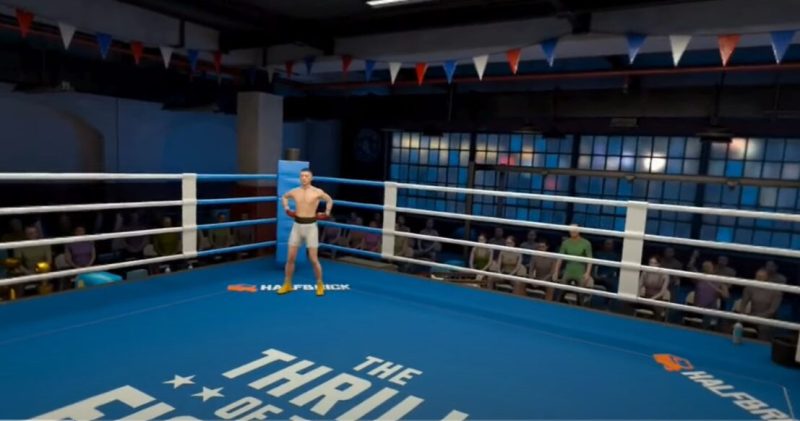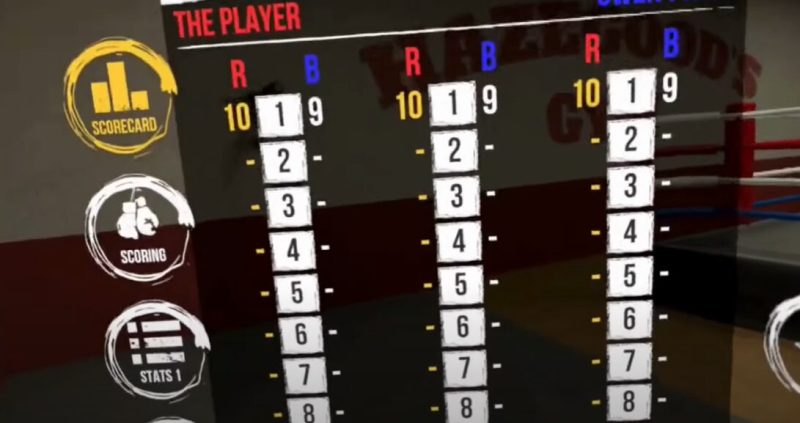📢 Disclosure: Some links on this page are affiliate links. As an Amazon Associate, I earn from qualifying purchases at no extra cost to you. Thanks for your support.
If you’ve recently stepped into the world of VR fitness, you’ve probably noticed the surge in popularity of boxing games, especially on the Meta Quest 3. And while technically they are games, they’re also full-body workouts that can help you build cardio while having a great time.
Today, we’re putting two very popular VR titles head-to-head: Thrill of the Fight (TOTF) and its much-anticipated sequel, Thrill of the Fight 2. Before we get started, you might want to check out our article on 10 best fitness VR games for more options.
As a Quest 3 owner, you might be wondering: Which title if worth getting? Both are excellent boxing simulators, but they each deliver a different type of challenge, realism, and workout intensity. Whether you’re here to burn calories, hone technique, or simply blow off steam, knowing the differences between these two titles will help you choose wisely.

So what’s different?
If you’re considering geting only 1 of the 2 games it’s vital to know the differences between them. You would think that TOTF 2 is everything the first game is and more but it’s actually not. The second game is for online match-ups, you can currently only play online multi-player in head to head matches. The offline mode only has the boxing bag for testing punch power.
TOTF 1 is actually a much better game for offline, it’s got multiple in-game opponents and you can play at different difficulty levels. The scoring ratings are much better too, you’re able to see how many punches you threw in the game and which punches you threw which adds another dimention to the game itself. TOTF 2 gives you the ability to upgrade your ranking based on your performance in game, but it terms of scoring, it’s nothing similar to the first game yet, you only get to see a score at the end of the online gameplay for how well you did.
Technical Performance on Meta Quest 3: Graphics and Visual Fidelity

One of the first things you’re probably thinking, is how well do they perform? Let’s go through both of them. The moment you load up Thrill of the Fight 2, you don’t notice a huge improvement in visual performance. But the environment is instantly more interesting. You’re placed into the boxing gym where you can see the ring, bags and counter adding to the realism. But when you jump into the actual game, the opponents don’t look like they’ve improved in appearance compared to the 1st game. Perhaps that’s because it’s online gameplay.
Instead, you’re able to customise your own characted to an appearance of your choice. Adding to the personalisation aspect of the game. At first, the ring was rather basic and looked very similar to the previous ring environments. But they recently added an updated of a new boxing venue add it does add alot of feel to the game. The venue displays rows of seats in the audience with better dynamic lighting and shadows that react to movement. The improved HDR lighting and texture sharpness make the sequel feel more immersive, especially on the Quest 3’s display.
While the original Thrill of the Fight still delivers a gritty, no-frills gym aesthetic, its visuals aren’t that far off the updated game and the characters arguably look better. But TOTF2’s new ring update does add much better realism, and the changes in

Performance Metrics
Both titles maintain smooth framerates on the Meta Quest 3, but TOTF2 benefits from better optimization and faster load times.
- Frame Stability: TOTF2 eliminates most stutters or slowdowns during high-action moments.
- Tracking Accuracy: The sequel captures punch motion and blocking gestures more precisely, minimizing the slight “lag” or tracking hiccups present in the first game so long as you have a stable internet connection.
- Occasional Downtime: Due to the new game being online, there seems to be alot of bugs still, which can make the game unavailable to play. This was worse in the ealier stages of its release on the Meta app, however, it’s important to note that it’s still released as early access. So, hopfully they can improve of these issues.
Gameplay Mechanics and Features
Combat System and training effectiveness
The heart of any boxing game lies in its combat, while TOTF is far from perfect, it goes a good job at tracking body movement. The punch detection seems to be more accurate and responsive. Hooks, jabs, and uppercuts register much better. For some reason, when we play TOTF 1, the jabs are not well recognised and alot of time missed in the scoring system. We aren’t sure if that’s a problem with our specific headset of the game itself, but in the new game that doesn’t seem to be a problem anymore. The blocking mechanics are also improved with defensive feedback that makes dodging and parrying feel more natural and rewarding. It also introduces a more balanced fatigue mechanic; still challenging, but less punishing than the original’s energy drain.

These updates make each round feel strategic rather than purely reactive. You’ll need to think more strategically and manage your stamina, read your opponent, and time your combos which is what alot of users where hoping for. Having said that, this game is also full of flaws in the mechanics where it takes away from the realism. You may find that some users can spam punches, punch with unreal power and even glitch out. All that can take away from the fun and make it less reliable for actual boxing training.
So, when it comes to training effectiveness, we can’t really say it will help develop skill. But still, it’s definitely a great cardio workout and the improved footwork system encourages body movement and shifting weight, helping to promote a full-body workout.
Game Modes and Content
This is where TOTF2 truly expands its reach with a more structured career mode with defined progression and increasingly skilled opponents. But the biggest change in this game is that so far, it’s only purpose seems to be online multiplayer. So, if you want to play offline FOTF or another boxing game would be the only option.
By comparison, the original TOTF was strictly a solo experience, ideal for focused, self-paced workouts. TOTF2 adds layers of motivation through competition and long-term goals but we do hope they will also include an offline mode eventually. Whether this will actually happen is another thing, but that might be a reason why you may want to pick another game.
Developer and Community Support
The original Thrill of the Fight was a solo passion project by developer Ian Fitz, who built one of the most beloved VR fitness titles on sheer authenticity and realism.
TOTF2, now backed by a larger team and publisher, reflects that foundation but adds polish and accessibility.
Community feedback continues to shape TOTF2’s updates, with planned additions like:
- New training modes
- Expanded online matchmaking
- Leaderboards and ranked fights
This live-service approach gives a more promising outline of future updates for TOTF2 and we are looking forward to see how it grows over time.
Overall
After playing both titles on the Meta Quest 3, we think both games have pros and cons to them. But rather than seeing TOTF 2 as an upgraded game, it seems more like an addon to the origional pack for an online multiplayer option. That is if they decide to release a newer offline mode. Both titles are priced very affordably and if you have a Quest 3, you can get them working straight from downloading them through the Meta App. Are they the best VR boxing games out there? That’s really hard to say because there’s some good new competition. However, they are both entertaining and a great workout. Follow us for more updates and reviews on similar VR games coming soon.
Thanks for reading! You can check out our article on best upcoming VR headsets if you’re interesting in upgrading your setup or seeing what’s to come. Alternatively, check out our similar articles below.

